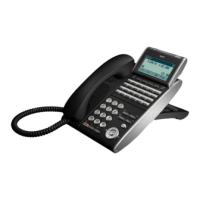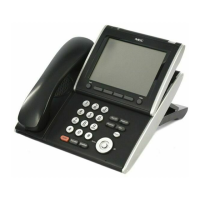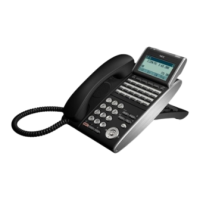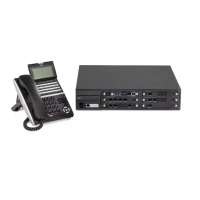• A DSS Console can have line keys for placing and answering calls.
• The DSS Console provides one-touch calling and a Busy Lamp Field for Door Boxes. Refer to Door
Box on page 1-234 when programming Door Boxes.
• The DSS Console provides one-touch Night Service switching. Refer to Night Service on
page 1-523 when programming Night Service options.
• Like a One-Touch Key, a user can have DSS Console keys for Direct Station Selection, Trunk
Calling, Personal Speed Dial, Speed Dialing, and Service Code access.
• The DSS Console provides one-touch External and Internal Page zone access. Refer to Paging,
External on page 1-537 and Paging, Internal on page 1-542.
• You can program the DSS Console keys with service codes to provide the functions of many of the
Programmable Function keys. The stored service code can have up to three digits, but it can have
additional option codes added (e.g. to set Immediate Call Forward for all calls. Trunk Group (
02)
and Virtual Extension (
03) codes can not be programmed on a DSS Console as the system does
not allow entry of the additional data required.
• The capacity of a console can be expanded by assigning a Page key (shift key). The Page key (shift
key) must be assigned on keys 55~60. (SL1100)
• When a Multiline Terminal user is on a call, they can transfer to another station by pressing a DSS
key for that station. It is not necessary to press Transfer key to transfer to another station using a
DSS key.
When a Multiline Terminal user is on a call, they must press Transfer key to transfer a call off site with
a DSS key.
• Pauses can be entered in the dial string of a DSS/One Touch button. The pause is entered as P in
the dial string and causes the system to wait three seconds before sending the rest of the digits that
follow the P (pause). Multiple pauses can be entered.
• The @ can be entered in the dial string of a DSS/One Touch button. The @ only applies to ISDN
and Intercom calls. When using the @, the system waits for the destination to answer (answer
supervision), and then sends the rest of the digits.
• Entering a P (pause) in a DSS/One Touch dial string can be used for CO calls, Intercom calls, or
after the @ for ISDN calls.
Default Settings
• No DSS Consoles assigned (in PRG 30-02-01).
• All DSS Console key ranges are ports 1~60.
• Once a DSS Console is enabled, the console keys are DSS keys (PRG 30-03-01).
System Availability
Terminals
All Multiline Terminals
Required Component(s)
None
Related Features
Abbreviated Dialing/Speed Dial
Call Forwarding
SL1000/SL1100
ISSUE 2.0
1-218
Direct Station Selection (DSS) Console
D

